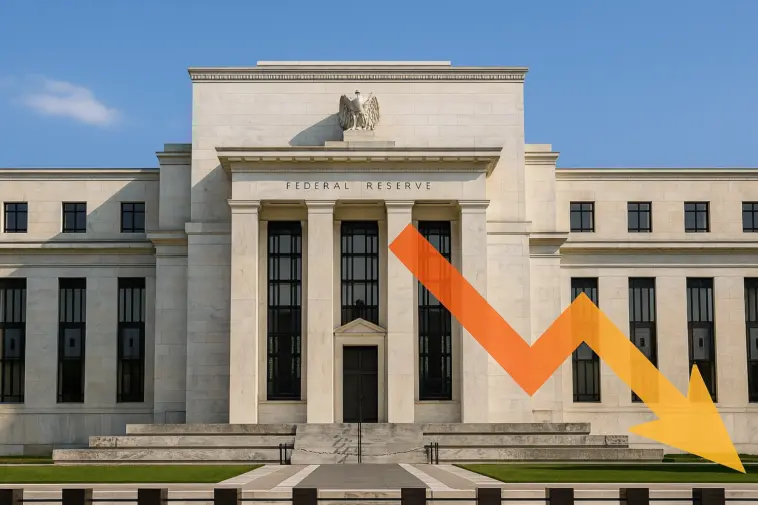In the event you have been hoping for a fast plunge in mortgage charges this fall, assume once more.
Boston Federal Reserve President Susan Collins warned in late September that
whereas the Fed has begun trimming charges, the trail forward is more likely to be gradual.
With inflation nonetheless lingering above the Fed’s 2% goal, policymakers stay cautious about
easing too shortly. For mortgage borrowers, this implies reduction is coming—however not as quick as many
homebuyers and refinancers may like.
The Fed’s Newest Transfer
Earlier this month, the Fed minimize its benchmark price by 25 foundation factors, the primary discount since
its aggressive tightening marketing campaign started in 2022. Markets had initially priced within the risk
of a number of cuts by year-end, however Collins’s remarks poured chilly water on that concept. She harassed
that “inflation dangers stay tilted to the upside” and that the Fed can not danger undoing
its hard-won progress by slashing charges too shortly.
This cautious stance aligns with Chair Jerome Powell’s messaging: price cuts shall be data-driven,
not calendar-driven. In apply, which means the Fed could solely ship one or two extra cuts
over the following six months, somewhat than the rapid-fire sequence markets have been hoping for.
Why It Issues for Mortgages
Mortgage charges don’t transfer in lockstep with Fed coverage charges, however they’re closely influenced by
expectations round them. The common 30-year fastened mortgage price is at the moment hovering close to
6.4%, down barely from its summer season highs. Debtors hoping for a swift return
to the sub-5% days of the pandemic are more likely to be dissatisfied.
Right here’s what Collins’s warning means for various teams of debtors:
- First-time homebuyers: Count on modest enchancment in affordability, however housing prices will stay elevated in comparison with 2020–21 ranges.
- Refinancers: In the event you locked in throughout 2023’s 7%+ highs, you’ll see alternatives to save lots of, however the window could open slowly.
- Traders: Rental property consumers might even see borrowing prices edge decrease, however cap charges will nonetheless be pressured by sticky financing prices.
Instance: How Fee Adjustments Have an effect on Funds
To place numbers behind the Fed’s determination, let’s have a look at a sensible state of affairs:
Think about a borrower taking out a $350,000 mortgage on a 30-year fastened price.
| Mortgage Fee | Month-to-month Fee (Principal + Curiosity) | Distinction |
|---|---|---|
| 7.0% | $2,329 | — |
| 6.4% (present avg.) | $2,191 | – $138 |
| 6.0% | $2,098 | – $231 |
| 5.5% | $1,988 | – $341 |
Because the desk exhibits, even small drops in mortgage charges can shave a whole bunch of {dollars} off
month-to-month funds. Nevertheless, except the Fed accelerates its chopping cycle, reaching
5.5% charges might take nicely into 2026.
The Housing Market Impression
Collins’s feedback are particularly necessary within the context of the US housing market.
After two years of constrained provide and hovering costs, affordability is at a multi-decade low.
Whereas barely decrease charges will assistance on the margins, they’re unlikely to unlock
a flood of demand in a single day.
Actual property brokers report that many consumers are nonetheless on the sidelines,
ready for a clearer sign that charges will meaningfully decline. Sellers, in the meantime,
stay reluctant to surrender their “golden handcuff” pandemic mortgages locked in at 3% or much less.
This creates a standoff that received’t break till charges fall additional.
International Context: The ECB’s Related Balancing Act
Throughout the Atlantic, the European Central Bank (ECB)
faces an analogous dilemma. President Christine Lagarde has emphasised flexibility,
however markets doubt the ECB will transfer aggressively. Identical to within the US, inflation dangers
are holding policymakers cautious. For world debtors, this implies the period of low cost cash
is just not coming again shortly.
What to Count on in 2025
Most economists now forecast that US mortgage charges will drift decrease via 2025,
however solely step by step. As a substitute of falling off a cliff, anticipate a staircase sample—small
step-downs each few months. By the tip of 2025, the consensus sees 30-year fastened
charges within the 5.5%–6.0% vary.
For debtors, the important thing takeaway is to act strategically:
- Contemplate refinancing if charges drop a minimum of 0.75% under your present mortgage.
- For consumers, discover price buydowns or adjustable-rate mortgages (ARMs) for near-term financial savings.
- Keep alert to Fed assembly minutes and inflation experiences, as these will drive market expectations.
Key Takeaways
- The Fed minimize charges in September however warns in opposition to speedy easing.
- Mortgage charges will probably drift decrease, however slowly—not dramatically.
- Debtors ought to plan for incremental financial savings, not a sudden return to pandemic-era lows.
- The housing market stays in a holding sample, with affordability pressures nonetheless excessive.
Sources: Federal Reserve, Mortgage Bankers Affiliation, Nationwide Affiliation of Realtors, ECB experiences.



